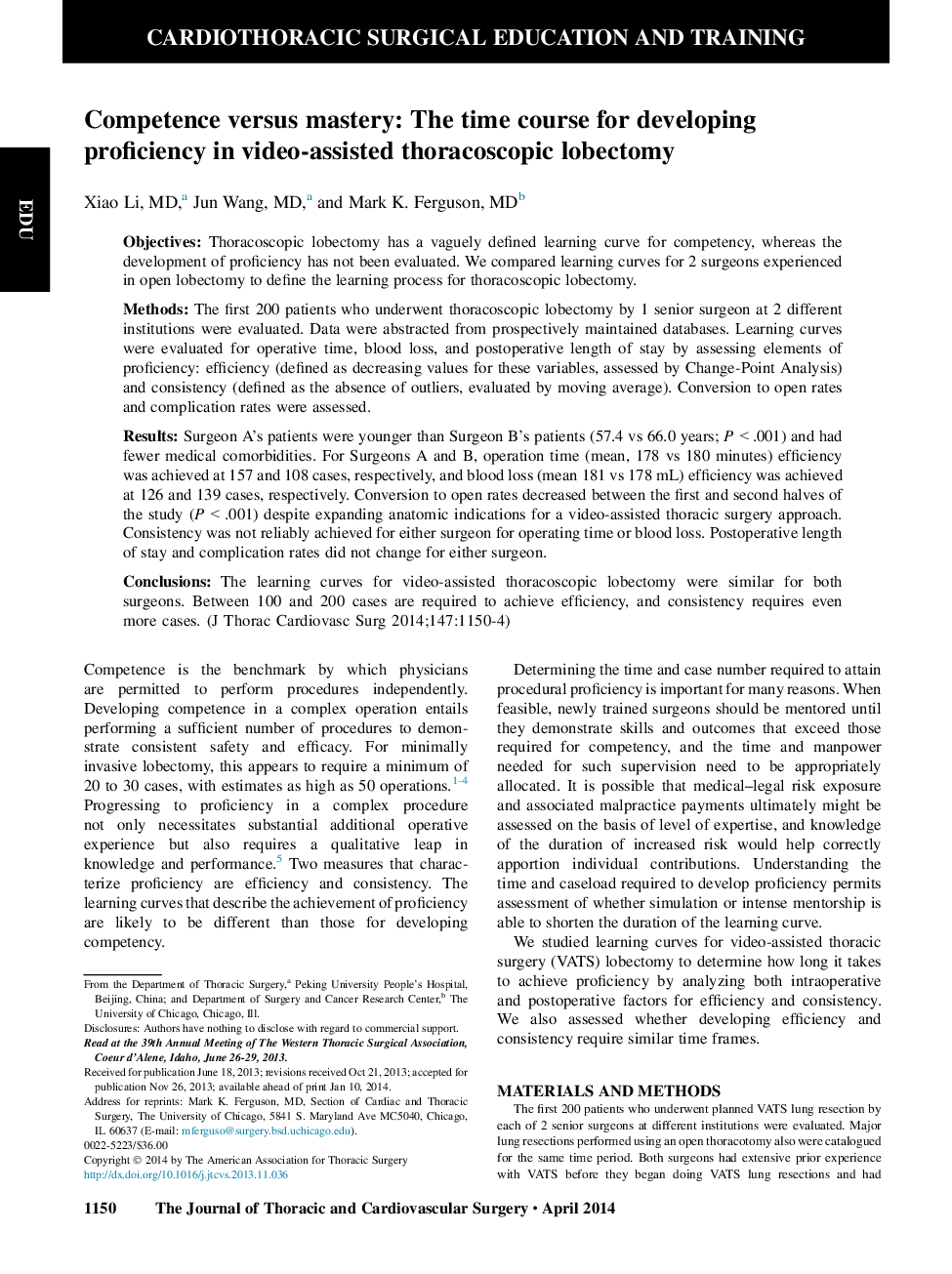| Article ID | Journal | Published Year | Pages | File Type |
|---|---|---|---|---|
| 2979715 | The Journal of Thoracic and Cardiovascular Surgery | 2014 | 5 Pages |
ObjectivesThoracoscopic lobectomy has a vaguely defined learning curve for competency, whereas the development of proficiency has not been evaluated. We compared learning curves for 2 surgeons experienced in open lobectomy to define the learning process for thoracoscopic lobectomy.MethodsThe first 200 patients who underwent thoracoscopic lobectomy by 1 senior surgeon at 2 different institutions were evaluated. Data were abstracted from prospectively maintained databases. Learning curves were evaluated for operative time, blood loss, and postoperative length of stay by assessing elements of proficiency: efficiency (defined as decreasing values for these variables, assessed by Change-Point Analysis) and consistency (defined as the absence of outliers, evaluated by moving average). Conversion to open rates and complication rates were assessed.ResultsSurgeon A's patients were younger than Surgeon B's patients (57.4 vs 66.0 years; P < .001) and had fewer medical comorbidities. For Surgeons A and B, operation time (mean, 178 vs 180 minutes) efficiency was achieved at 157 and 108 cases, respectively, and blood loss (mean 181 vs 178 mL) efficiency was achieved at 126 and 139 cases, respectively. Conversion to open rates decreased between the first and second halves of the study (P < .001) despite expanding anatomic indications for a video-assisted thoracic surgery approach. Consistency was not reliably achieved for either surgeon for operating time or blood loss. Postoperative length of stay and complication rates did not change for either surgeon.ConclusionsThe learning curves for video-assisted thoracoscopic lobectomy were similar for both surgeons. Between 100 and 200 cases are required to achieve efficiency, and consistency requires even more cases.
